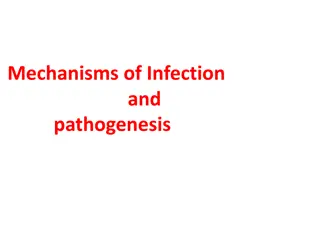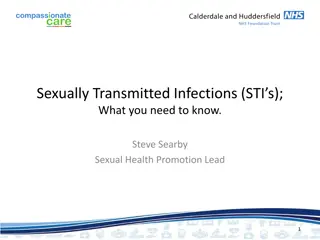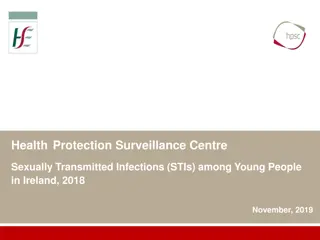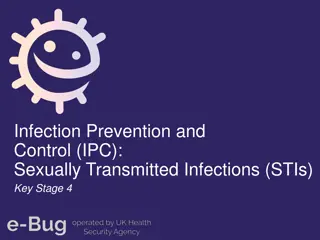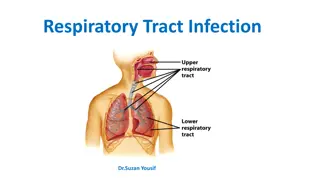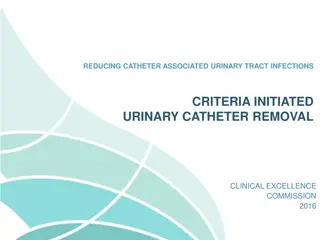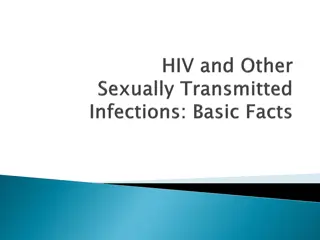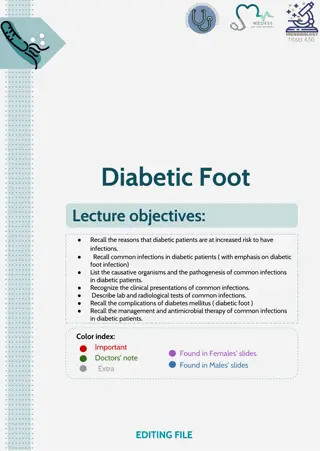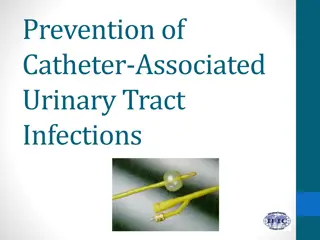Overview of Genitourinary Tract Infections and STIs by Prof. Dr. Mete Kılcıler
Genitourinary Tract Infections and Sexually Transmitted Infections (STIs) are common conditions affecting both men and women. This article, presented by Prof. Dr. Mete Kılcıler from the Department of Urology at Bahçeşehir University School of Medicine, delves into the various aspects of UTIs, including definitions, classifications, etiology, and recurrent UTIs. It highlights the inflammatory response of the urothelium to bacterial invasion, differentiates between bacteriuria and colonization, and discusses the susceptibility of young women to UTIs. The classification based on anatomic site involvement and the distinction between uncomplicated and complicated UTIs are also covered. The article further explores the causes of UTIs, emphasizing E. coli as a major pathogen and the presence of multiple organisms in certain conditions. Understanding these aspects is crucial for effective management and treatment of UTIs and STIs.
Download Presentation

Please find below an Image/Link to download the presentation.
The content on the website is provided AS IS for your information and personal use only. It may not be sold, licensed, or shared on other websites without obtaining consent from the author. Download presentation by click this link. If you encounter any issues during the download, it is possible that the publisher has removed the file from their server.
E N D
Presentation Transcript
Genitourinary Tract Infections and Sexually Transmitted Infections (STI) PROF. DR. METE K LC LER DEPARTMENT OF UROLOGY, SCHOOL OF MEDICINE, BAH E EH R UNIVERSITY
UTI inflammatory response of urothelium to bacterial or other microorganism invasion
Definations Infection: Bacteriuria + pyuria asymptomatic symptomatic Bacteriuria : bacteria in urine Colonization: Bacteriuria without pyuria
Introduction UTIs represent a wide variety of syndromes including urethritis, cystitis, prostatitis, Pyelonephritis.
Introduction Young women are particularly susceptible, 40% of all women will suffer at least one UTI in their life. Infection in men occurs less frequently until the age of 50, when incidence in men and women is similar.
Classification According to anatomic site of involvement: Lower tract infection: cystitis, urethritis, prostatitis Upper tract infection: pyelonephritis, involving the kidneys
Classification According to Degree 1-Uncomplicated 2-Complicated predisposing lesion of the UT such as: congenital abnormality of the UT, a stone, a catheter, prostatic hypertrophy, obstruction, or neurological deficit
Recurrent UTIs Multiple symptomatic infections with asymptomatic periods Reinfection: caused by a different organism than originally isolated Relapse: repeated infections with the same initial organism
Etiology The microorganism that cause UTIs usually originate from the bowel flora of the host Uncomplicated UTI: E.coli accounts for 85%
Etiology The majority of UTIs are caused by a single organism In patients with stones, indwelling catheter, or chronic renal abscesses multiple organisms may be isolated
Diagnosis: Microscopic examination The presence of one organism sample correlates with 100,000 bacteria/ml
Diagnosis Hematuria, non-specific, may indicate other disorders such as calculi or tumor Protenuria is found in the presence of infection
Treatment Desired outcome Prevent or treat systemic infection Eradicate the invading organism Prevent reoccurrence of infection
Infection in males Infection in males are considered complicated
Infection in males The most common causes are Instrumentation Catheterization Renal and urinary stones In the elderly the most common cause is bladder outlet obstruction due prostatic hypertrophy.
Overview Definition of STIs: What are they? Transmission: How are they spread? Types of infection: Bacterial (Chlamydia, LGV, Gonorrhea, Syphilis) Viral (HSV, Hepatitis B, HIV, HPV) Parasitic (Pubic lice, scabies, trichomoniasis) Prevention: How can I protect myself? Testing: Where can I go for help?
Sexually Transmitted Infections Infections that are most commonly passed through sexual contact: Oral Vaginal Anal Skin-to-skin
TRANSMISSION In order for transmission to occur, it is necessary to have: A body fluid with the germ in it A way of spreading the germ from one person to another
BODY FLUIDS Saliva Tears Sweat Urine Ear wax Semen Vaginal fluid Blood Fluid in sores or blisters
METHODS OF TRANSMISSION: Low Risk Sharing lip balm Mutual monogamy Massage Sharing forks, knives, etc. Hugging Kissing Holding hands Dancing Sitting on toilets
METHODS OF TRANSMISSION: High Risk Sexual Intercourse vaginal anal oral Blood-to-blood contact Sharing needles or other drug-use equipment Tattoo or body piercing Infected mother to her baby
Symptoms What are the symptoms? How would I know if I have been infected? Sores (either painful or painless) Blood in urine Burning sensation when urinating Rashes Itching Bumps Warts Unusual discharge
Bacterial vs. Viral STIs Bacterial STI s include Chlamydia, LGV, gonorrhea & syphilis Can be treated and cured with antibiotics Untreated infection can cause PID, infertility, & epididymitis Viral STI s include HPV, HIV, Herpes, & Hepatitis B There is NO cure Medication available to treat symptoms only Can pass onto others for the rest of your life
Chlamydia The most common bacterial STI Greatest number of infections found in people 15 to 24 years old Untreated, it can affect the cervix and urethra, and occasionally the rectum, throat and eye 50% have NO symptoms - men and women Can be treated with antibiotics
GONORRHEA The 2nd most common bacterial STI Most common in people aged 15 to 29 Can affect the cervix, urethra, rectum, throat, and occasionally the eyes Can be treated with antibiotics Often NO symptoms, especially in females
GONORRHEA: Signs & Symptoms Female Increased vaginal discharge Painful urination Lower abdominal pain Bleeding after sex and between periods Pain during sex Male Thick, yellowish- green discharge from penis Painful urination Testicular pain or swelling Rectal pain, discharge or itching
SYPHILIS A bacterial infection that progresses in stages Primary: (3 days 3 months) starts as a small, painless sore called a chancre; goes away on it s own Secondary: (2 24 weeks) rash on the body, palms of hands & soles of feet, hair loss, feeling sick Latent: lesions or rashes can recur
SYPHILIS - Complications Untreated syphilis may lead to tertiary syphilis, which can damage: The cardiovascular system (heart & blood vessels) The neurological system Other major organs of the body Complications may lead to death
Genital Herpes (Herpes Simplex Virus - HSV) Two types: HSV-1, causing cold sores, and HSV-2, causing genital herpes It is a viral infection causing outbreaks of painful sores and blisters Spread through direct vaginal, oral or anal sexual contact with an infected partner Also transmitted by receiving oral sex from a partner with a history of cold sores Symptoms can be treated with antiviral medications, but NO CURE
Genital Herpes Signs & Symptoms Prior to an outbreak, the person may feel a tingling or burning sensation where the virus first entered the skin Painful sores (external or internal) Inflammation and redness Fever Muscular pain Tender lymph nodes
Hepatitis B (HBV) Virus that attacks the liver Most infected people (90%) naturally produce antibodies to fight the disease, but some develop chronic HBV and will carry the virus for the rest of their life Chronic infection can lead to liver damage, cirrhosis, and cancer There is NO CURE, but vaccination can prevent infection
Hepatitis B Woman suffering from liver cancer caused by HBV
Human Papilloma Virus or HPV (Genital Warts) One of the most common STIs About 75% of people will have at least one HPV infection during their lifetime There are over 100 types of HPV Low-risk HPV types cause genital warts High-risk HPV types may cause cancer of the cervix There is NO CURE, but vaccination is available to prevent certain types of HPV
HPV Signs & Symptoms Many people with low-risk types have no symptoms Other HPV types may cause: Warts on vulva, cervix, penis, scrotum, anus or in the urethra Itchiness Discomfort and bleeding during sex
HIV / AIDS HIV is a virus that destroys the immune system over time, robbing the body of its ability to fight other infections and illnesses Once the immune system is weakened, other infections occur and AIDS develops (the fatal stage of HIV infection) The virus is present in blood, semen, vaginal secretions & breast milk
HIV / AIDS Signs & Symptoms 2 to 4 weeks after exposure, some people experience mild flu-like symptoms that last a few weeks, then disappear Many people have NO symptoms until years after exposure The only way to know is to get TESTED!
Pubic Lice & Scabies Infections caused by parasitic infestations Pubic lice: tiny crab-like insects that nest in pubic hair & bite their host to feed on blood Scabies: mites that burrow below the surface of the skin to lay their eggs Can live for 1 3 days on bedding, towels and clothing Treated with medicated creams & lotions
STI Prevention Abstain from sexual intercourse (only method that is 100% effective) Don t share needles or other drug-use equipment Have only 1 mutually faithful, uninfected sexual partner Get tested for STI s before having sex Use a latex condom & spermicide Avoid alcohol & other drugs
When should I get tested? Once you become sexually active, you need a check- up & STI testing once a year You also need an STI test if: You didn t use a condom or the condom broke Your partner has an STI Your partner is having sex with someone else You have ever injected drugs You or your partner have any STI symptoms You have been raped




